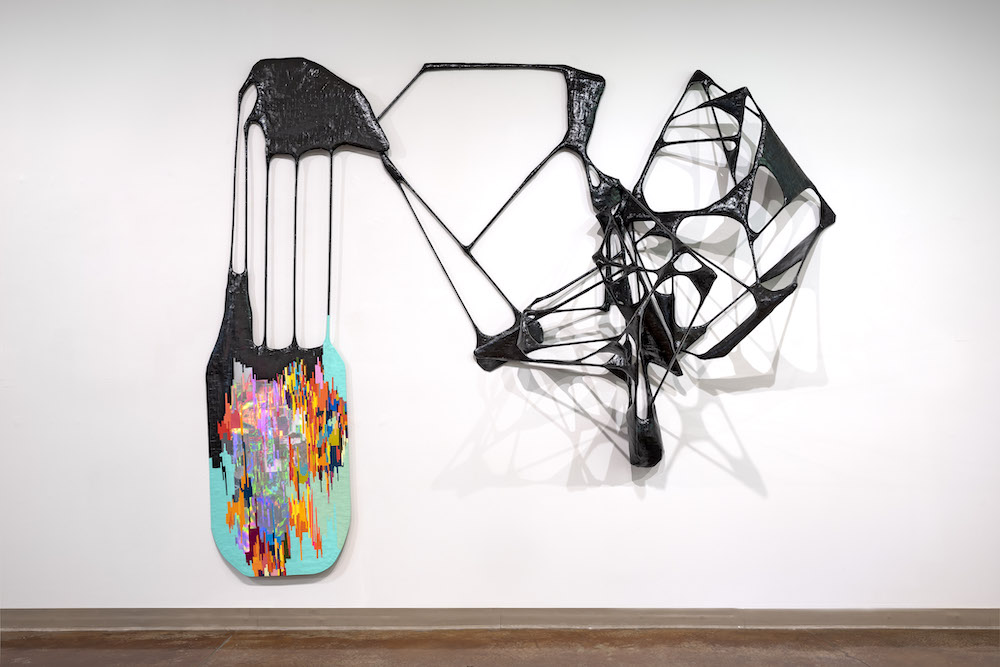“Free Fall,” Rochelle Botello’s solo exhibition at the Bakersfield Museum of Art, affords an incredibly rich and evocative visual experience. Botello’s organic and sometimes strangely discomfiting sculptures suggest an amalgam of associations; looking at these works, one feels that they could have been made by a wise old alien or, alternately, a wondrously imaginative child. Botello utilizes her materials in new and unexpected ways, suggesting oddly satisfying connections. Working with colored bits of duct tape meticulously (and sometimes surgically) wrapped over wooden dowels, the structures possess a weightiness and lightness simultaneously, as well as an inherent fluidity as though they could lift off the ground at any minute despite appearing inextricably bound to the living world.
It is true that Botello possesses formidable imaginative powers, yet it is her willingness to allow these structures space to breathe that makes the work so compelling. The pieces represented here are fragile yet strong, awkward yet elegant, and quiet yet fierce, as many of her images allude, albeit loosely, to animal iconography. In a 2021 interview, Botello mentioned the physiognomy of a dog’s bent leg as an inspiration for her sculptural works. Gazing upon them, one can easily imagine various creatures, even primordial ones. There is also an alien quality to how Botello transforms the simplest of materials into an electrifying vernacular of color, shape, and form. The work appears to defy gravity, causing one to wonder if these mysterious structures might just up and walk out the museum’s front door, beckoned by the call of the Mother Ship! Whether or not aliens were involved in the conception of this work, Botello is responding to the echo of memory and the fragility of our human connectivity and consciousness. As the exhibition title suggests, the work feels free from all human constraints, simultaneously soaring and falling before our very eyes.

Rochelle Botello, “Free Fall,” installation view, 2024. Photo: Gene Ogami. Courtesy of the artist.
Complementing the sculptures, yet independent from them, are a series of discreet ink and acrylic drawings that Botello has aptly titled, It’s All Wrong, But It’s Alright. These drawings are a testament to the same persistent theme throughout the exhibition that our destiny is ultimately not our own making and that the best we can do is surrender to the experience of being alive. The drawings are not overtly narrative, yet as a comprehensive unit of space, they appear to tell a story of resilience. Each is in conversation with the other, yet distinctly separate in appearance, just as we engage with our fellow human travelers yet are ultimately alone on our personal journeys.
In the end, perhaps Botello takes comfort in making this work as though each object were a necessary panacea in a world gone mad.


